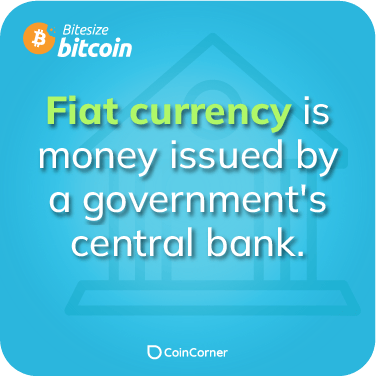What is Fiat Currency?

Fiat currencies are traditional, government-issued, and government-controlled forms of currency used for daily transactions within a specific country or region. Unlike cryptocurrencies like Bitcoin, which are decentralized and operate on a global network, fiat currencies are typically centralized, with a nation's government or central bank having authority over their issuance and control. Here's a more detailed look at how fiat currencies, like the US Dollar or British Pound, are issued and managed:
Printing Physical Currency: Governments print banknotes and mint coins, which are then distributed to banks and the public.
Electronic Currency: A significant portion of a country's money supply exists in digital form, represented by bank account balances and electronic transactions.
1. Government Authority:
Fiat currencies are issued and regulated by the national government or a central authority. These entities have the sole power to create and control the money supply within their jurisdiction.2. Central Bank Involvement:
In many countries, central banks play a crucial role in managing the nation's currency. Central banks, such as the Federal Reserve in the United States or the Bank of England in the United Kingdom, are responsible for implementing monetary policy, controlling the money supply, and ensuring price stability.3. Legal Tender Status:
Fiat currencies are declared as "legal tender" by the government, which means they must be accepted for transactions within the country. This status gives fiat currencies their value and makes them the standard medium of exchange for goods and services.4. Issuance Mechanism:
Fiat currencies are typically created through a combination of methods, including:Printing Physical Currency: Governments print banknotes and mint coins, which are then distributed to banks and the public.
Electronic Currency: A significant portion of a country's money supply exists in digital form, represented by bank account balances and electronic transactions.
5. Monetary Policy:
Central banks use monetary policy tools to control the money supply, interest rates, and inflation. They can influence the economy by adjusting these parameters to achieve specific economic goals, such as stabilizing prices, promoting economic growth, or managing unemployment.6. Inflation and Deflation:
Inflation, which is the gradual increase in the price level over time, and deflation, its opposite, are phenomena that can affect the value of a fiat currency. Central banks aim to manage inflation to maintain price stability.7. Exchange Rates:
The exchange rate of a national fiat currency in relation to other currencies can fluctuate based on factors like international trade, economic conditions, and monetary policy. These fluctuations impact the currency's relative value.8. Fiscal Policy:
The government's fiscal policy, which includes taxation, government spending, and public debt management, can also influence the overall economy and, consequently, the value of the fiat currency.9. Counterfeiting and Regulation:
Governments and central banks actively combat counterfeiting by incorporating security features into banknotes and coins. They also enforce regulations on currency exchange to prevent illegal activities like money laundering.Share this fact:





